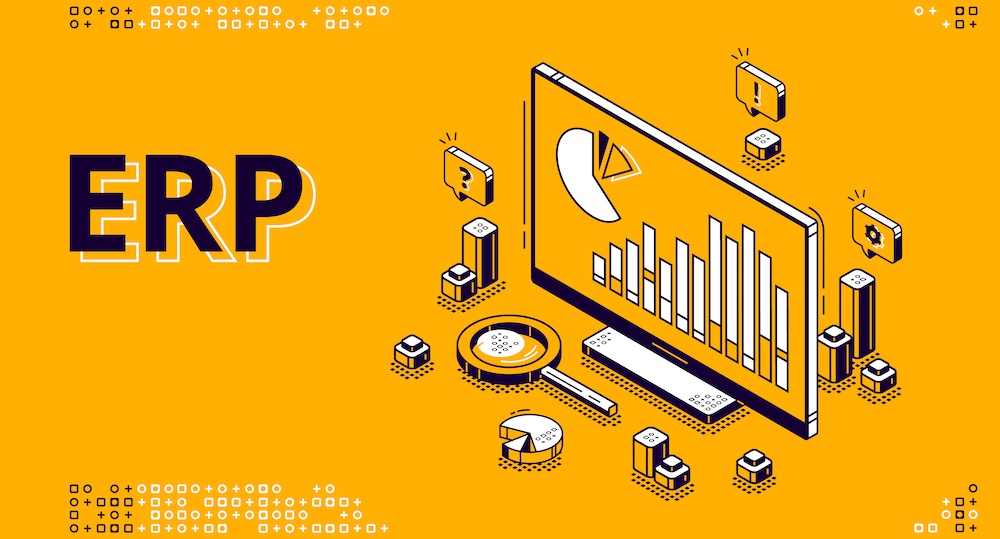
Small and medium enterprises (SMEs) face unique challenges, including limited resources, high competition, and growing customer demands. In today’s digital age, ERP software has become a vital tool for SMEs to address these issues effectively. These enterprise resource planning systems provide integrated solutions to streamline operations, improve productivity, and drive growth.
Top benefits of ERP software extend beyond just streamlining operations. It integrates various business functions into a single platform, ensuring efficiency and better decision-making.
Why SMEs Need ERP Software
Running an SME requires managing various business functions efficiently. From inventory to customer relationships, multiple aspects demand attention. Traditional methods are often time-consuming and prone to errors. This is where ERP software comes in, offering a unified platform that automates processes and centralizes data.
By adopting ERP systems, SMEs can reduce manual tasks, improve operational efficiency, and enhance decision-making. With real-time insights, they can stay competitive in a fast-paced business environment.
Top Benefits of ERP Software for SMEs
1. Enhanced Operational Efficiency
SMEs often struggle with inefficiencies caused by manual processes and siloed systems. ERP software eliminates these issues by integrating all operations into a single platform. From finance to supply chain, every function is streamlined, saving time and effort.
For example, automating inventory management reduces errors, ensures optimal stock levels, and prevents costly delays. According to a recent survey, businesses using ERP software improve operational efficiency by up to 30%.
2. Better Financial Management
Managing finances is critical for SMEs to ensure profitability and sustainability. ERP systems simplify financial processes like budgeting, invoicing, and payroll. With real-time data, businesses can track expenses, monitor cash flow, and make informed financial decisions.
A report by Allied Market Research revealed that 60% of SMEs using ERP software experienced improved financial reporting accuracy. This advantage helps them allocate resources effectively and plan for growth.
3. Improved Customer Relationship Management
Customer satisfaction is a key driver of success for SMEs. ERP systems often include customer relationship management (CRM) modules that help businesses track interactions, manage leads, and provide personalized service.
For instance, a small business using ERP software can automate customer follow-ups, ensuring timely responses and better retention rates. This approach leads to stronger relationships and increased customer loyalty.
4. Streamlined Supply Chain Management
Managing supply chains efficiently is crucial for SMEs to reduce costs and meet customer expectations. ERP software offers tools to monitor inventory, track shipments, and optimize procurement processes.
Real-time insights ensure businesses can respond quickly to changes in demand or supply disruptions. Studies show that SMEs using ERP systems reduce supply chain costs by up to 20%.
5. Scalability for Growth
As SMEs grow, their operational needs become more complex. ERP software provides the scalability required to handle increased workloads and new business challenges.
A growing enterprise can expand operations, add users, and integrate additional features without overhauling its entire system. This flexibility ensures the business remains agile and ready for future opportunities.
6. Enhanced Data Security
SMEs are often targets of cyber threats due to their limited IT resources. ERP software offers robust security features to protect sensitive data.
With role-based access controls, encryption, and regular updates, businesses can safeguard their information and maintain compliance with regulations. These measures build trust with customers and partners, ensuring long-term success.
7. Cost Savings
While implementing ERP software involves an initial investment, the long-term cost savings are significant. By automating processes and reducing manual errors, businesses save time and resources.
According to Panorama Consulting, SMEs using ERP systems save an average of 20% on operational costs within the first year. These savings can be reinvested to drive growth and innovation.
Global Trends in ERP Software Adoption
The adoption of ERP software among SMEs is rising globally. The market is expected to grow at a CAGR of 8.2% from 2023 to 2030, driven by increasing demand for efficiency and digital transformation.
In regions like Asia-Pacific, SMEs are rapidly adopting ERP systems to compete in global markets. Governments in these regions are also supporting digitalization initiatives, further boosting ERP adoption.
Choosing the Right ERP Software for Your Business
Selecting the right ERP system is critical to maximize its benefits. Businesses should evaluate their needs, budget, and scalability requirements.
Key factors to consider include:
- Customization: Does the ERP software cater to your specific industry needs?
- Ease of Use: Is the system user-friendly and easy to implement?
- Integration Capabilities: Can the software integrate with existing tools and systems?
- Vendor Support: Does the provider offer reliable customer support and training?
Real-Life Example: An SME Success Story
A mid-sized manufacturing company implemented ERP software to address inventory management challenges. The result was a 25% reduction in stockouts and a 30% increase in operational efficiency within six months.
The ERP system also improved customer satisfaction by ensuring timely order deliveries. This success story highlights how adopting ERP systems can transform SME operations and drive growth.
Future of ERP Software for SMEs
Emerging technologies like artificial intelligence (AI), machine learning (ML), and IoT are shaping the future of ERP systems. These innovations enable predictive analytics, real-time monitoring, and smarter decision-making, giving SMEs a competitive edge.
Additionally, cloud-based ERP solutions are becoming popular among SMEs due to their affordability and flexibility. These systems allow businesses to access data anytime, anywhere, without significant infrastructure costs.
Conclusion
For small and medium enterprises, adopting ERP software is no longer an option—it’s a necessity for achieving operational excellence and growth. These enterprise resource planning systems streamline operations, enhance customer satisfaction, and reduce costs, giving SMEs a competitive edge in today’s market.
If you’re ready to explore how ERP software can transform your business, contact a trusted provider to discuss your requirements and get started.
